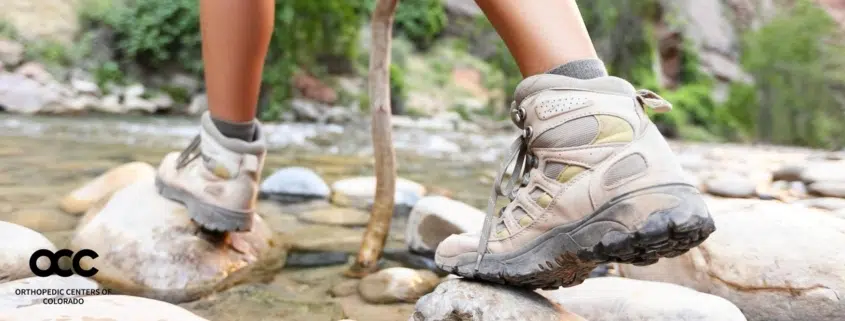Hikers and Runners: Treating and Preventing Plantar Fasciitis
If you’re an avid runner or hiker, you’ve probably experienced foot pain at some point in time across the miles. If that pain can be described as burning or stabbing pain in your heel, you may have plantar fasciitis.
The condition is the most common cause of heel pain, per the American Academy of Orthopaedic Surgeons (AAOS). The plantar fascia tissue goes from heel to toe and helps support the arch of the foot, called the plantar fascia. When that tissue gets damaged or inflamed, it makes running – and often walking, or even standing – painful.
Lack of good arch support in footwear can lead to plantar fasciitis, as can structural issues in the foot, a sudden increase in physical activity, and obesity, which puts too much pressure on the arch of the foot. People who have more than one risk factor tend to have a higher risk of developing plantar fasciitis.
Do I have to stop running or hiking? Treatment options for plantar fasciitis
In the short term, the answer is often yes. As much as devoted runners and hikers hate to hear it, moderation or a complete break from extensive activities can have a great impact on improving your foot health. Wearing better arch supports can also contribute to recovery.
Initial plantar fasciitis treatments help the vast majority of patients. Beyond rest, treatments include ice, anti-inflammatory medications, and various types of physical therapy or stretches.
When these treatments don’t provide relief, your doctor may recommend corticosteroid injections in the heel to reduce pain.
In severe situations, after conservative treatment options have been exhausted, surgical options may be considered. Surgery is generally a last resort and is only used in a small number of cases.
I’ve never had plantar fasciitis. How can I avoid it?
Prevention is the best medicine, the saying goes. And it’s true here too. By reducing risk factors that can lead to inflammation, you can prevent the development of plantar fasciitis. Here are four tips for prevention:
- Ensure your footwear offers good arch and heel support. This includes what you wear even when you’re not running or hiking. High heels, unstructured flip-flops or a lot of time on your feet in shoes with poor support can contribute to a problem.
- Athletes at every level need rest days. Don’t over train and listen to your body. If your job requires physical work or excessive time on your feet, factor that into your activity plans.
- Work to maintain a healthy weight to minimize any excess pressure on your heels and feet in general.
- Don’t ignore early signs of pain: Plantar fasciitis pain will get worse over time if ignored and untreated.
If you already have heel pain and suspect that it is plantar fasciitis, it’s time to see an orthopedic specialist – ideally a foot and ankle doctor. And it’s generally a good idea to moderate or pause your regular activity routine until you can meet with an expert who can confirm a diagnosis.
In Colorado Springs, Dr. John Shank and his team at the Colorado Center for Orthopedic Excellence have extensive experience treating all types of orthopedic issues, including plantar fasciitis. Dr. Shank is a Fellowship-Trained, Board Certified Orthopedic Surgeon who specializes in the treatment of foot and ankle injuries and disorders. To make an appointment, call (719) 623-1050 or request an appointment online.


